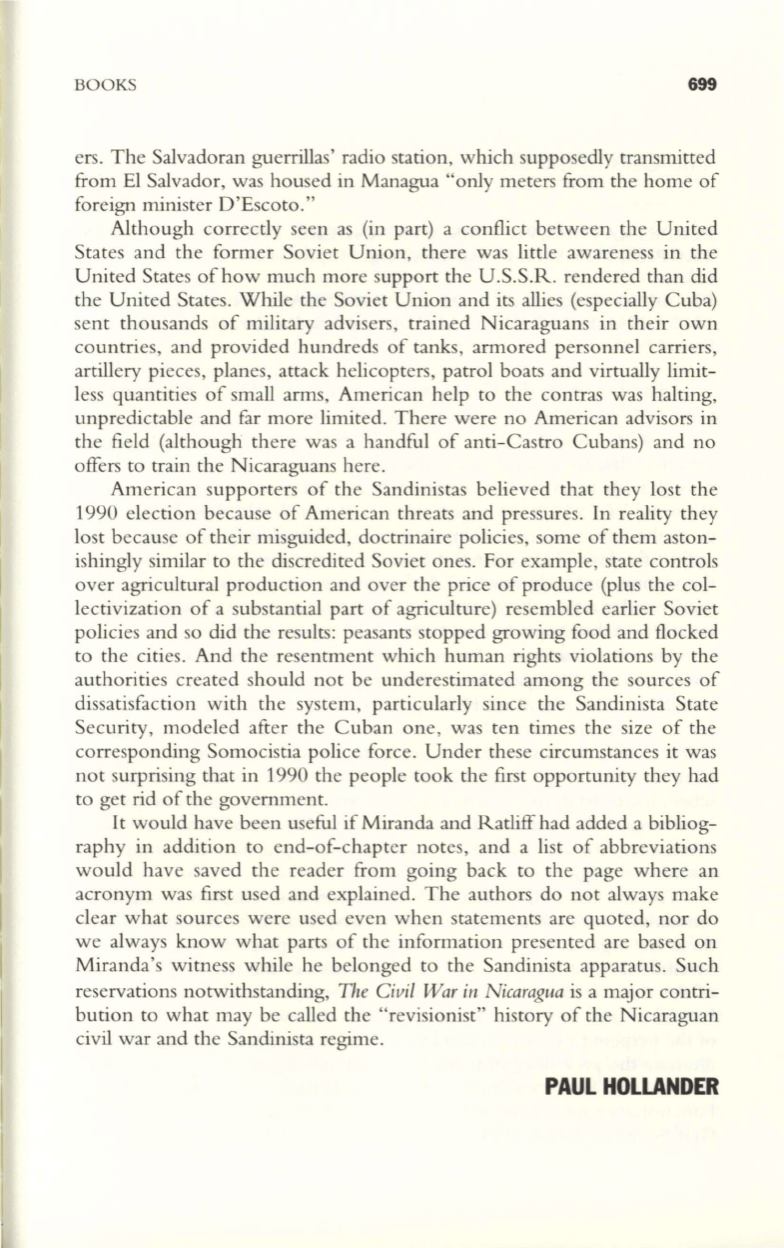
BOOKS
699
ers. The Salvadoran guerrillas' radio station, which supposedly transmitted
from El Salvador, was housed in Managua "only meters from the home of
foreign minister D'Escoto."
Although correctly seen as (in part) a conflict between the United
States and the former Soviet Union, there was little awareness in the
United States of how much more support the U.S.S.R. rendered than did
the United States. While the Soviet Union and its allies (especially Cuba)
sent thousands of military advisers, trained Nicaraguans in their own
countries, and provided hundreds of tanks, armored personnel carriers,
artillery pieces, planes, attack helicopters, patrol boats and virtually limit–
less quantities of small arms, American help to the contras was halting,
unpredictable and far more limited. There were no American advisors in
the field (although there was a handful of anti- Castro Cubans) and no
offers to train the Nicaraguans here.
American supporters of the Sandinistas believed that they lost the
1990 election because of American threats and pressures. In reality they
lost because of their misguided, doctrinaire policies, some of them aston–
ishingly similar to the discredited Soviet ones. For example, state controls
over agricultural production and over the price of produce (plus the col–
lectivization of a substantial part of agriculture) resembled earlier Soviet
policies and so did the results: peasants stopped growing food and flocked
to the cities. And the resentment which human rights violations by the
authorities created should not be underestimated among the sources of
dissatisfaction with the system, particularly since the Sandinista State
Security, modeled after the Cuban one, was ten times the size of the
corresponding Somocistia police force. Under these circumstances it was
not surprising that in 1990 the people took the first opportunity they had
to get rid of the government.
It would have been useful if Miranda and Ratliff had added a bibliog–
raphy in addition to end-of-chapter notes , and a list of abbreviations
would have saved the reader from going back to the page where an
acronym was first used and explained . The authors do not always make
clear what sources were used even when statements are quoted, nor do
we always know what parts of the information presented are based on
Miranda's witness while he belonged to the Sandinista apparatus. Such
reservations notwithstanding,
The Civil War in Nicaragua
is a major contri–
bution to what may be called the "revisionist" history of the Nicaraguan
civil war and the Sandinista regime.
PAUL HOLLANDER


